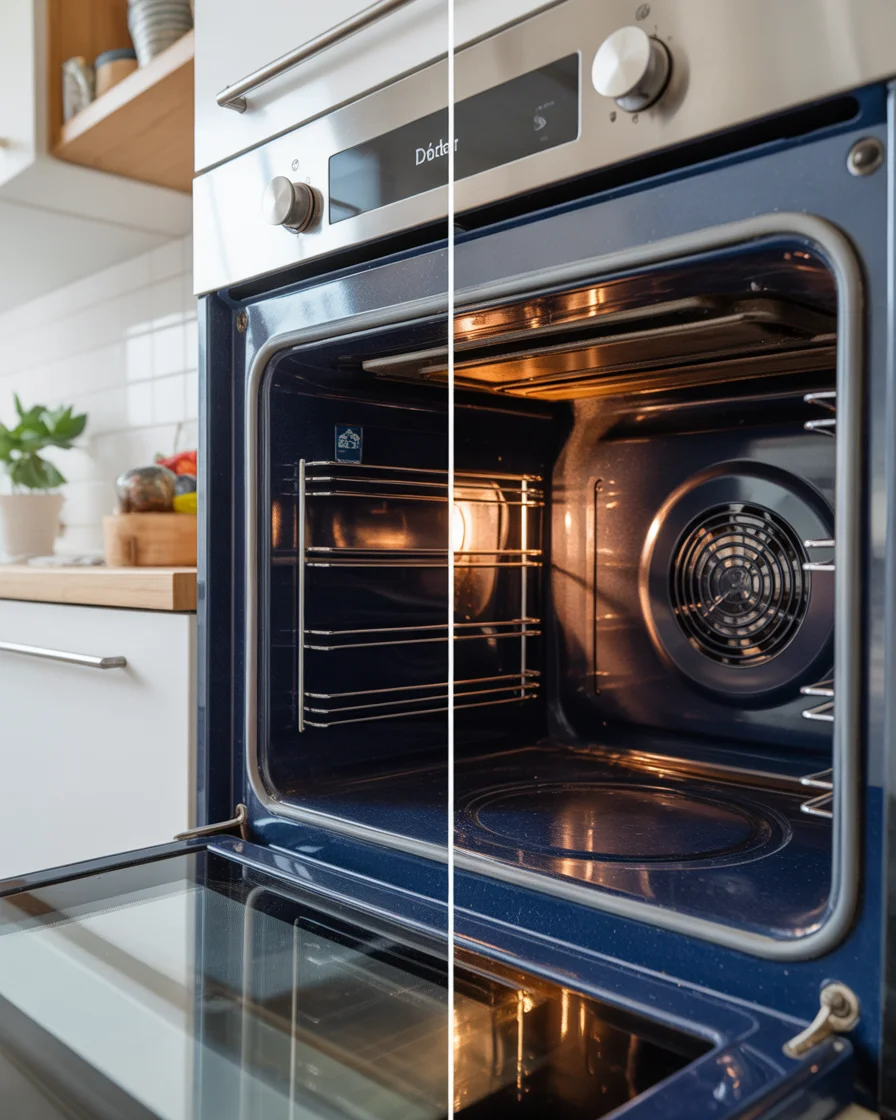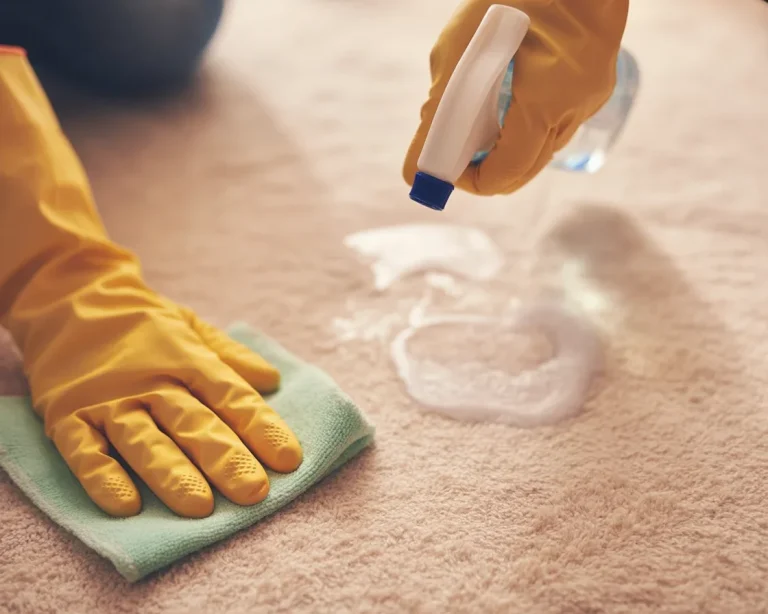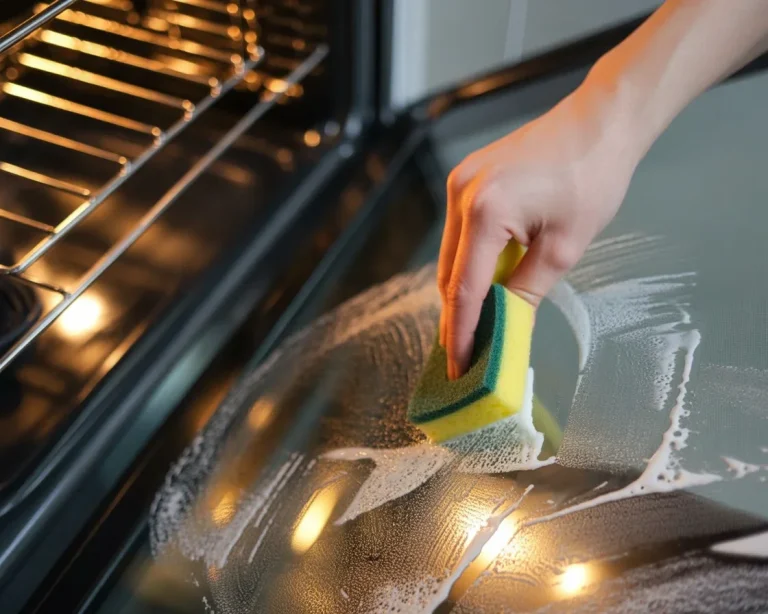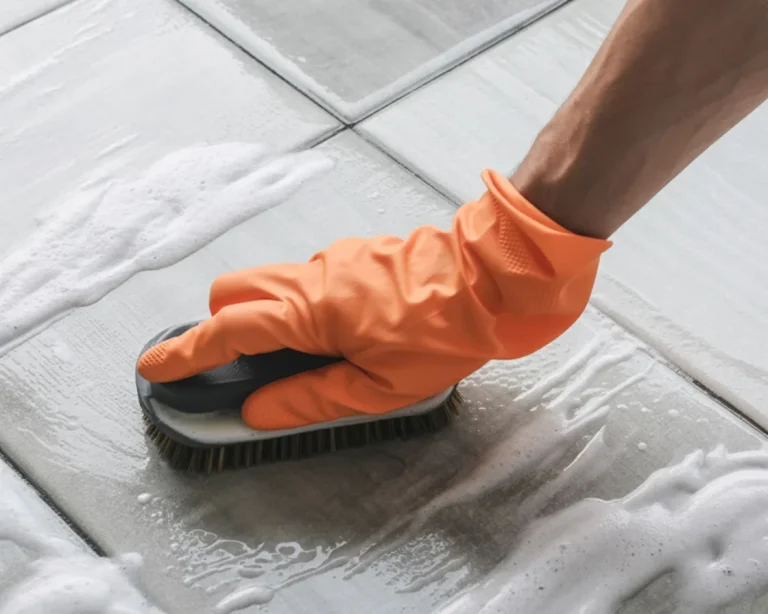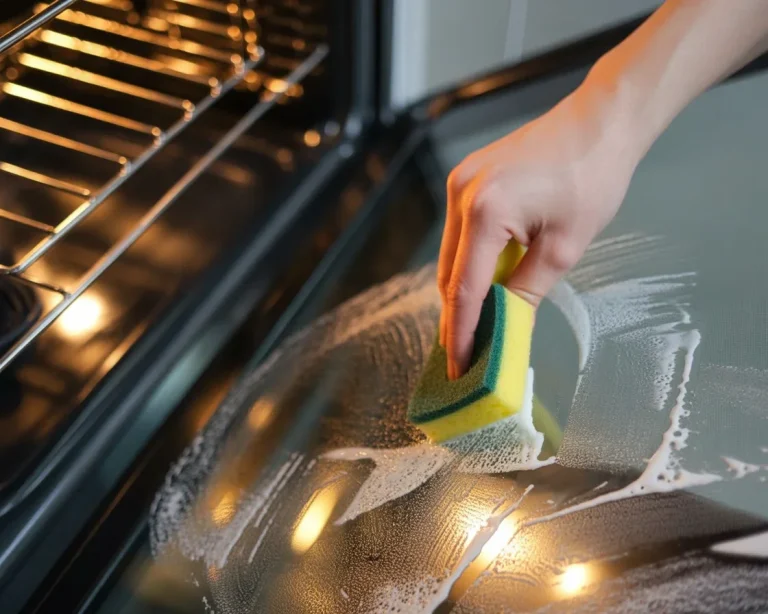How to Clean Your Oven—3 Quick and Easy Ways
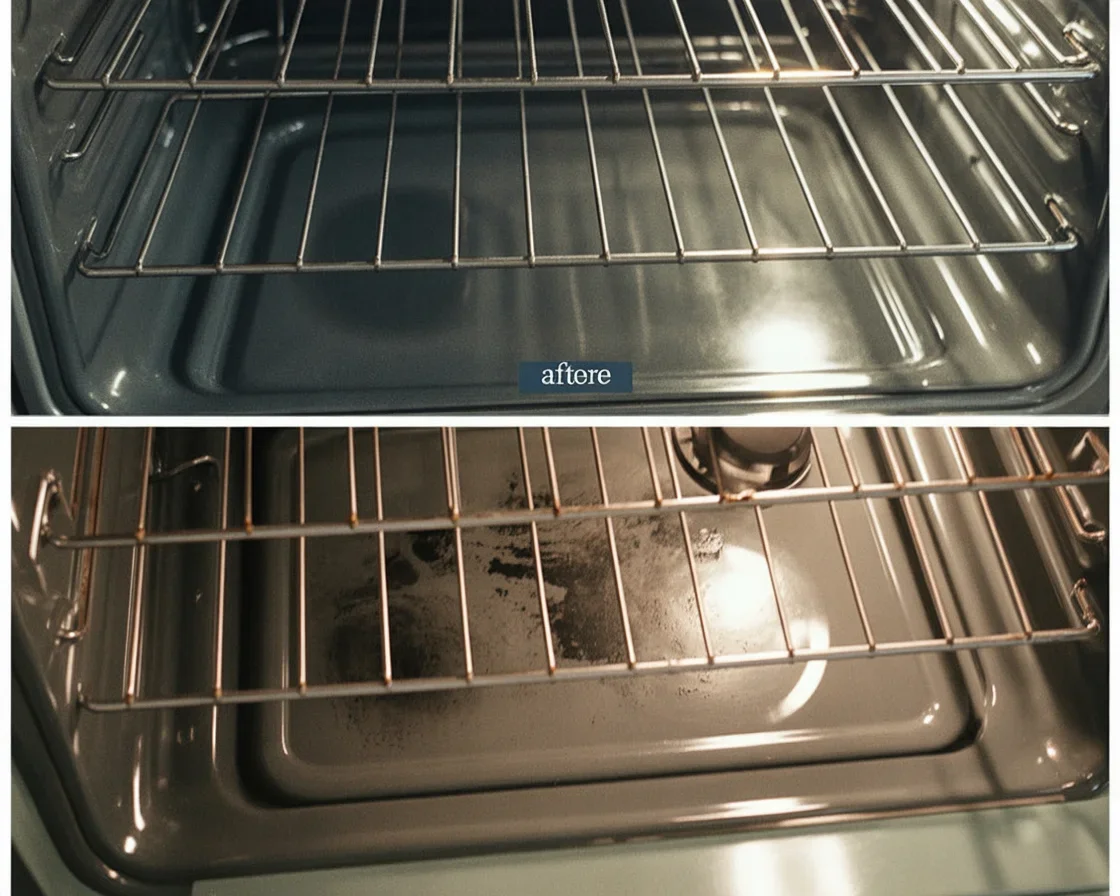
How to Clean Your Oven without a headache? I get it. You bake a gorgeous lasagna on Sunday, and by Tuesday the oven smells like a smoky cheese memory. I used to put off scrubbing mine until the crumbs basically staged a coup. Then I found a few simple, natural ways that work without harsh fumes. Today I’m sharing the exact steps I use and what to avoid so it’s fast, safe, and genuinely doable. Let’s save your next roast chicken from tasting like last week’s spills.
The Best Way To Clean an Oven Naturally
If you want a method that really works and doesn’t make your kitchen smell like a science lab, this is it. The heart of it is a gentle paste made from baking soda and water, then a bright little spritz of white vinegar to lift the gunk. Think of it like a slow-cooker version of cleaning. The paste does the heavy lifting while you do literally anything else.
What you will need
- Baking soda
- White vinegar in a spray bottle
- Warm water
- Microfiber cloths or old rags
- Gloves if you have sensitive skin
- Plastic scraper or old plastic spatula
- Old toothbrush for corners
- Small bowl for mixing paste
First, remove the oven racks. Set them aside for a separate clean. On the inside, whisk baking soda with a few spoonfuls of warm water until it looks like thick frosting. Spread it over the interior, especially the back wall and the floor of the oven where spills love to hang out. Avoid coating the heating elements.
Let it sit. Give it at least 30 minutes for light messes or leave it overnight if the grime is stubborn. The paste softens stuck-on bits so you won’t have to use a ton of elbow grease. When you return, spritz vinegar directly onto the paste. It will foam like a happy science fair, and that fizz helps break down the oily residue even more.
Wipe away the paste with a damp cloth, rinsing as you go. Stuck corners? A toothbrush works like a charm. For the glass door, keep it gentle to avoid scratches. If you feel any slick spots afterward, mist a little more vinegar and wipe with a clean damp cloth until it feels squeaky clean.
Why I love this: it’s low effort, low stink, and safe for most finishes. If you’ve ever wondered How to Clean Your Oven using pantry basics that actually deliver, this method is the winner in my kitchen.
How to Clean an Oven with Baking Soda and Vinegar
This is the deep-clean that saves my sanity after holiday baking. It’s the same natural duo as above, but here’s the step-by-step for when the mess is a little epic and you want a clear plan.
Step 1: Mix the paste. In a small bowl, combine about 1 cup baking soda with warm water, one spoonful at a time, until it’s spreadable. Not too runny, not too dry.
Step 2: Clear the oven. Remove racks and any stray crumbs. You can line the oven floor below the door with a towel to catch drips. Safety first makes cleanup easier later.
Step 3: Coat the inside. Wearing gloves if you like, spread the paste over the entire interior, skipping heating elements. I go heavier on stained areas. If the mess is thick near the door, a little extra paste there pays off.
Step 4: Let it work. For mild grime, set a timer for 30 to 60 minutes. For heavy buildup, leave it overnight. This is when I do dishes, watch a show, or forget about it until morning. The time is what makes the magic happen.
Step 5: Vinegar spritz. Fill a spray bottle with white vinegar and mist over the dried paste. It will foam. That fizz is your best friend, loosening grease without harsh chemicals.
Step 6: Wipe and rinse. Use a damp cloth to remove everything. Rinse the cloth often. Stubborn corners? A toothbrush or a plastic scraper gets under sticky spots without scratching.
Step 7: Clean the racks. I soak mine in hot water with a squeeze of dish soap in the bathtub or a big sink for 30 to 60 minutes, then scrub lightly. Rinse and dry well before putting them back.
“I followed this method on a rental oven that looked rough, and the before and after was wild. No harsh fumes, just patience and baking soda. My landlord asked what cleaner I used. I said ‘my pantry.’”
If friends ask me How to Clean Your Oven without chemicals, this is the routine I send. It’s simple, cheap, and surprisingly satisfying. When you cook afterward, that clean, neutral heat makes food taste better, which feels like a tiny kitchen reset.
Other Natural Oven Cleaning Tips
Three quick alternatives
Lemon steam session If the oven is smelly but not super dirty, fill an oven-safe dish with water and add thick slices of lemon. Heat at 250 degrees for 25 to 30 minutes. The steam softens light grime and the lemon helps with lingering odors. Let the oven cool slightly, then wipe with a damp cloth. It’s a great pre-clean before using paste, and it leaves a fresh scent.
Salt paste for fresh spills When something bubbly spills during baking, turn the oven off, sprinkle a generous amount of salt over the hot spill, and let it cool. The salt absorbs moisture and loosens the burned bits. Once it’s cool, scrape gently with a plastic spatula and wipe clean. If a faint stain remains, follow with a small patch of baking soda paste.
Dishwasher tablet spot trick For tiny, stubborn spots on the door glass or interior, dip a plain dishwasher tablet in warm water and gently rub it on the spot. The powdery surface lifts residue fast. Wipe clean with a damp cloth. Don’t use this on delicate coatings or soft aluminum, and go easy with pressure to avoid micro-scratches.
Once you understand How to Clean Your Oven with simple ingredients, it gets less intimidating. Keep a small jar of baking soda near the sink and a dedicated vinegar spray. When messes happen, you can do a 5-minute maintenance wipe and stay ahead of big cleanups.
How long will this take to clean?

I like having a time plan before I start, so here’s a real-world timeline to help you pick the right method for your day.
Quick refresh If you just need to reduce smells and wipe away light splatter, do a lemon steam for 25 to 30 minutes, then a 10-minute wipe down. About 40 minutes total, including cool time.
Standard clean with paste Active time is only 15 to 20 minutes to mix and spread the paste, then 30 to 60 minutes of wait time. Wiping takes another 15 to 25 minutes depending on how much buildup you had. Call it 60 to 100 minutes door to door.
Overnight deep clean When the oven is heavily soiled, I prefer spreading the paste before bed and letting it sit overnight. In the morning, spritz vinegar, wipe clean, and finish in about 25 to 35 minutes. This is the least stressful way to handle a big job because the paste does the work while you sleep.
For racks, soaking can be 30 to 60 minutes. While they’re soaking, you can clean the oven interior. If you’re planning a weeknight dinner, you can still do a standard clean, but give yourself enough time for the wipe-down and a short preheat afterward. That preheat helps dry any lingering moisture. If you’re timing your weekend cook, this timeline fits perfectly with whatever plan you have for How to Clean Your Oven without losing your Saturday.
What to avoid
- Don’t scrub glass with anything sharp No razor blades or steel wool on your oven door. They can scratch or haze the glass.
- Don’t soak or spray heating elements Keep moisture away from the elements and the control panel.
- Don’t mix chemicals Never mix vinegar with bleach or ammonia. Stick to one safe approach.
- Don’t use harsh cleaners on aluminum Some racks or trim pieces are aluminum and can discolor with strong oven cleaners.
- Don’t turn the oven on to “help” the paste Heat can bake the paste onto the surface. Let the paste work at room temperature, then wipe.
- Don’t forget a final rinse Residue can smoke on the next preheat. Finish with a clean, damp cloth and a dry towel.
Common Questions
How often should I clean my oven?
If you cook a lot, aim for a light wipe every 1 to 2 weeks and a full clean every 1 to 3 months. If there was a big spill, spot clean as soon as the oven is cool.
Can I use lemon juice instead of vinegar?
Yes. Lemon has acid that helps with grease and smells great. Vinegar is usually a bit stronger, but lemon works well for light messes.
Is this safe for enamel and stainless steel?
Generally yes. Baking soda is gentle and vinegar is mild. Test a small area first if your oven has special coatings, and avoid scrubbing with anything too abrasive.
Will my kitchen smell like vinegar?
A little at first, but it fades quickly. A short preheat after cleaning clears any lingering scent.
What’s the fastest plan for a weeknight?
Do a lemon steam, then a quick baking soda spot treatment on tough areas. You’ll be done in about 40 minutes and can still get dinner on the table. It’s a simple approach to How to Clean Your Oven when time is tight.
Ready to open a spotless oven door
There you go, three easy natural methods that work whether your oven just needs a refresh or a real rescue. Keep baking soda, vinegar, and a soft cloth ready and you’ll never wonder How to Clean Your Oven again. Start with a quick lemon steam, try the paste on tough spots, and keep up with easy maintenance as you cook. You’ve got this, and your next bake will taste like it should.

